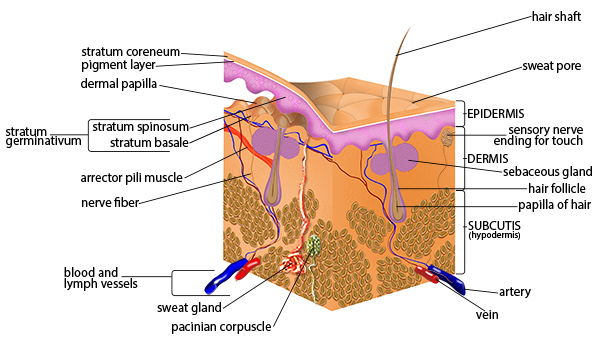Order of assessment is inspect, palpate,percuss and auscultate.
For abdominal surgeries use a pillow or other support to brace wound...
Balance is a low center of gravity and a wide base of support.
Unurysis occurs during REM sleep.
Ischemia causes pressure ulcers in as little as 2 hours.
An oral dose is higher than IV dose due to "first pass...
Turn, cough and deep breath every 2 hours (TCDP). use insentive...
Steps in taking blood pressure.
Therapeutic baths require a physcian's order.
A nurse's role is to collect the medication and check that the...
Parasomnia is behavior interferring with sleep, e.g. sleepwalking,...
The purpose of the National Patient Safety Goals to...
As we age the acid mantel is gone making the skin itchy.
Normal ratio of anterior to posterior width to lateral is 1:2 .
Describe cough by regularity, duration, sound, productive vs....
Convergence is the ability for the eyes to move together on both near...
Temperature becomes a problem when it spikes.
A clean surgical incision that heals without extra intervention is...
We assess skin turgor on elderly at the clavicle or forehead.
Surgical dressing stay in place for 24-48 hrs.
Diabetic patients require special foot care
The three P's are pressure, pain and potty are assessed every 2...
Physical restrains are used as a last resort and only when all other...
Pruritus relates to itchy skin associated to dry skin or other...
The patient's family must be involved in deciding whether or not...
The sclera will be either white or yellow.
Vesicular sounds heard over most of the lung fields, low pitched soft...
Every px must have physician's name, a date and time, what the med...
The order for restraint must include the type of restraint,...
Staples or sutures only by physician or by physician's order.
A desynchonization leads to disruption in sleep pattern, increase...
Nurse can take a telephone order (TORD telephone order read back) but...
If a patient falls, first assess then assist them to their feet...
Slough is dead tissue that needs to be removed.
A pressure ulcer retains it's stage even through the healing...
Dehiscense is when a wound splits open along the surgical...
A tertiary intention wound must heal from the inside out.
Medications used to treat, diagnosis, treat, cure, relief or...
Pharmacokinetics is the study of drug movement throughout the body....
Birth to 6 weeks: 30–60 breaths per minute
...
Evisceration is when a wound dehisceses and the internal organs come...
Get your culture before you administer antibiotics.
CPM - continuous passive movement
Peticki is small pinpoint capillary bruising.
Brochial breath sounds are heard over the trachea high pitched loud,...
Parenteral is drug administered other than orally or rectally...
Brochovesicular breath sounds heard over mainstem bronchus.
Adeventicous breath sounds are both continuous (crackles) and...
Med Admin routes abbreviations.
Perrla stands for pupils equal round, reactive to light and...
Tissue of the soft pallet closing off the airway and brain sends a...
3 parts to the nursing diagnosis - Problem, Etiology, Symptoms.
The first-pass effect (also known as first-pass metabolism or...
Patients goals should be
The Joint Commission is responsible for setting patient safety...
CPAP forces air in lung keeping the soft pallet in place.
What is the number one nursing intervention?
Having a temperature below 100.4 is fine.
Resting heart rate
...
We are we likely yo get pressure ulcers (bony prominences).
Discharge planning starts on admission
What are some benefits of sleep?
Pressure ulcers only heal by secondary intention.
Tertiaty intention healing is delayed primary intention healing.
Nutrition and hydration, bathing strips skin of oil restrict bathing,...
What does PMI stand for
General considerations for respiratory assessment
Inspect respiration
Pharmacist's role in medication administration is to fill the...
What are abnormal findings of the skin?
What is detailed in therapeutic bath?
Three layers of skin, epidermis, dermis, subcutaneous tissue.
Blood Pressure
...
How often must physician or practioner reassess the need for...
Center of gravity
Short term consequences of sleep apnea.
Abnormal hari dandruff, scabes, lice, ticks,
You can leave your patient unattended any time.
Capillary refill should be
Long term consequences of sleep apnea.
Name the nine pulse sites.
Nurses can change the first surgical dressing.
What factors contribute to delayed healing
More fucking abbreviations
Types of baths include
What is an independent nursing intervention for stage 1 pressure...
A consenual reflex means that actions are independent
Match cranial nerves
What are the types of surgical fluid drains or exudates from the...
How does the nurse test wether the incision will tolerate...
How often are restraints evaluated?
What is an unstagable pressure ulcer?
What are the six cardinal views while testing gaze
What are the four stages of pressure ulcers
What is secondary intention healing?
Treating a stage 3 pressure ulcer.
Body mechanics consists of
What does the skin do?
What does adipose tissue do?
Where are the lymph nodes?
Medication administration time abbreviations.
What is an order for C&S?
What are the assessment tools used to screen skin breakdown
















